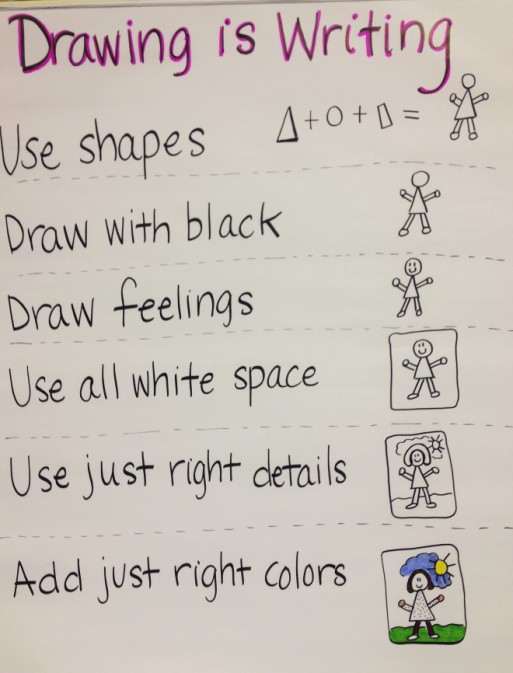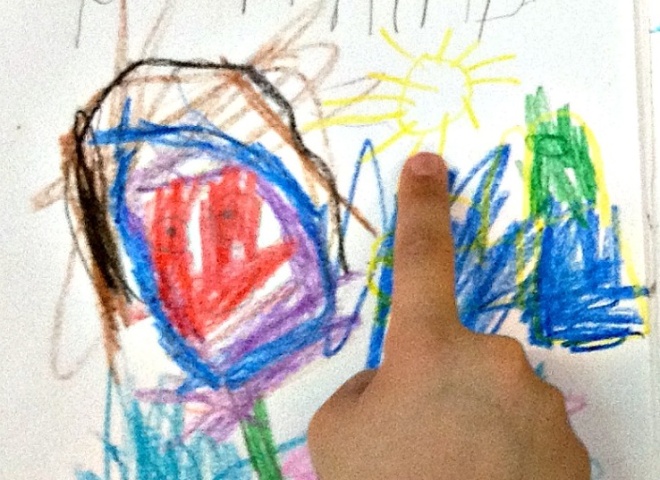Primary teachers know that drawing is writing and that even our littlest writers have wonderful and very important stories to tell and opinions to share. It’s important to mention that the anchor chart below, which I’ve shared before, is one that is typically constructed one lesson at a time, over the course of days or even weeks. How fast you move depends on the needs of your writers and the time available for instruction.
This seems like child’s play, doesn’t it? It is. In fact, play is often the work of writers. It’s fun to be sure, but it’s also purposeful. Even the simplest moves result in important learning and growth. This kind of play isn’t a free-for-all. It’s a carefully crafted catalyst intended to move writers forward.
When I teach at the primary level, I often begin by asking writers to sketch their stories. They’ll typically scribble at first, producing tight little knots or loops or a heavy flurry of lines. Eventually, shapes begin to emerge, and then, readers begin to recognize characters and elements of setting.
The lessons embedded in the chart above are intended to help writers create characters with far greater intention. For example, using shapes to create people opens up white space. This invites teachers to ask writers what clothing characters might be wearing, how they can use color to make the pictures they are writing match the pictures in their minds, or even how they can show readers what characters are feeling.
This is how writers begin to question their thinking and their work. Questions inspire even the littlest writers to revise, and revision is where the magic happens.
I thought I’d share these new charts with you today. The first was sketched up quickly as I was teaching first graders how to craft narratives this winter. We began with these first lessons. Soon, quick walk through the room during independent writing time showed me that writers were ready to draw how their characters were feeling. We spent a moment studying facial expressions and particularly, the language of eyebrows. This was not only a whole lot of fun, it inspired some pretty sophisticated talk and challenged writers to add far more precise details to their drawings.
It was important to let them know that achieving artistic perfection wasn’t the goal. They were thinking about how characters were feeling and changing their drawings to demonstrate these new ideas as best as they could. This was huge! I reminded them that these additions and changes would show up in the labels they added later. Those labels inspired some gorgeous sentences!
I find that drawing is not about the drawing. It’s about the ideas inspired by drawing.
Here’s a prettier version of a similar chart, which lives inside my sketchbook.
Need a bit of inspiration for your own eyebrow lessons? Check out the emoji’s on your phone. Or take a peek at my pinterest board for sketch-noting and visualization.
Lessons like these remind me that sometimes, making writing is more effective than simply assigning it. That’s what my new book, Make Writing, is all about. I hope you’ll take a peek!







